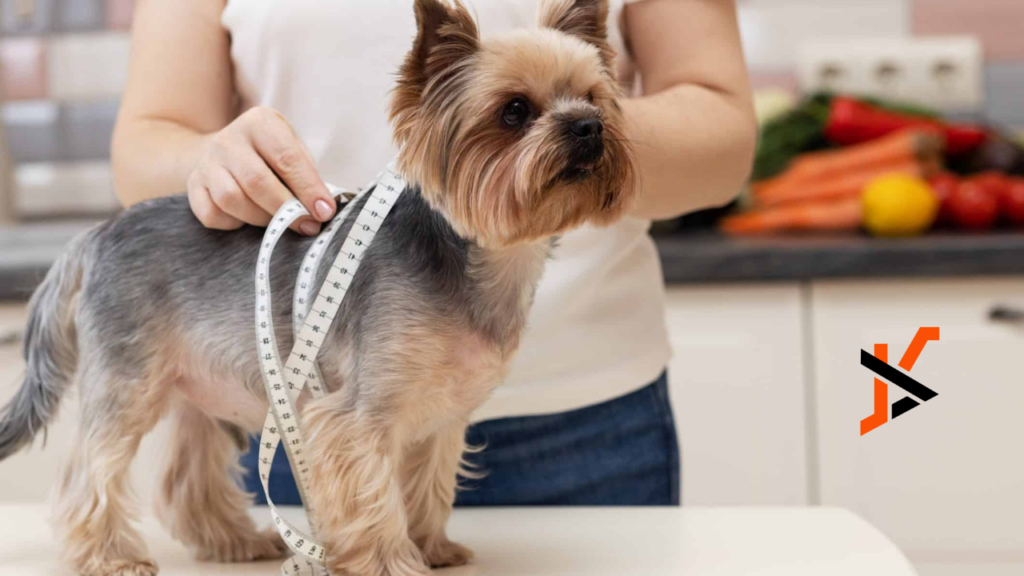Maintaining a healthy weight is crucial for your dog’s overall well-being. Excess weight can lead to numerous health issues, such as diabetes, heart disease, and joint problems. If your dog is overweight, it’s important to take proactive steps to help them shed those extra pounds. Here are some effective strategies to assist your furry friend in losing weight and achieving a healthier lifestyle.
Assess Your Dog’s Current Weight
First, determine whether your dog is indeed overweight. You can do this by consulting with your veterinarian. They will evaluate your dog’s body condition score (BCS) and provide a target weight based on their breed, age, and overall health. Regular vet visits are essential to monitor your dog’s progress and adjust their weight loss plan as needed.
Adjust Their Diet
Diet plays a critical role in weight management. Start by reducing your dog’s caloric intake. Measure their food portions accurately using a kitchen scale or measuring cup. Avoid free-feeding and stick to scheduled meal times.
Opt for high-quality, low-calorie dog food that is rich in protein and fiber. Fiber helps your dog feel full, reducing the likelihood of begging for more food. Your vet can recommend a suitable diet plan tailored to your dog’s needs.
Limit Treats and Table Scraps
Treats and table scraps can contribute significantly to your dog’s caloric intake. Limit the number of treats you give and opt for healthier alternatives, such as carrot sticks or apple slices. Avoid feeding your dog human food, especially those high in fat and sugar. If you do give treats, factor them into your dog’s daily caloric intake to ensure you don’t exceed their limit.
Increase Physical Activity
Exercise is vital for weight loss and overall health. Start with regular walks and gradually increase their duration and intensity. Aim for at least 30 minutes of exercise daily, depending on your dog’s age, breed, and fitness level.
Incorporate activities that your dog enjoys, such as fetch, swimming, or agility training. Engaging in playtime not only burns calories but also strengthens the bond between you and your dog.
Monitor Progress and Adjust as Needed
Record your dog’s weight and measurements regularly to keep track of its weight loss journey. Based on their progress, adjust their diet and exercise routine. Weight loss should be gradual and steady, aiming for about 1-2% of their body weight per week. If you notice any changes in your dog’s behavior, such as lethargy or decreased appetite, consult your vet for advice.
Consider Using an Extreme Dog Fence
If your dog has a tendency to roam or escape, an extreme dog fence can be a useful tool. It provides a safe and secure environment for your dog to exercise freely without the risk of getting lost or injured.
An extreme dog fence can encourage more outdoor activity, contributing to your dog’s weight loss efforts. Ensure that the fence is installed properly, and regularly check it for any damages.
Provide Mental Stimulation
Mental stimulation is just as important as physical exercise. Engage your dog with interactive toys, puzzle feeders, and training sessions. Mental activities can help prevent boredom, which often leads to overeating. Teaching new tricks or commands keeps your dog’s mind sharp and can be a fun way to bond with them.
Regular Vet Check-ups
Frequent vet check-ups are crucial during your dog’s weight loss journey. Your vet can monitor your dog’s health, provide guidance, and make necessary adjustments to their weight loss plan.
Regular blood work and health assessments ensure that your dog remains healthy while losing weight. Vets can also identify any underlying health issues that might be contributing to weight gain.
Avoid Crash Diets and Over-exercising
Crash diets and excessive exercise can be harmful to your dog. Rapid weight loss can lead to muscle loss and nutritional deficiencies. Over-exercising can cause injuries, especially in older or less active dogs. Follow a balanced and gradual approach to weight loss, ensuring your dog’s health and well-being are prioritized.
Be Patient and Consistent
Weight loss takes time and consistency. Be patient with your dog and stick to the plan. Celebrate small victories and stay committed to their health journey. Positive reinforcement and encouragement go a long way in keeping your dog motivated and happy.
Create a Supportive Environment
Involve the entire household in your dog’s weight loss plan. Ensure everyone follows the same rules regarding feeding and treats. Consistency from all family members helps in maintaining a steady routine. A supportive environment contributes significantly to the success of your dog’s weight loss journey.
Seek Professional Help if Needed
If you’re struggling to help your dog lose weight, don’t hesitate to seek professional help. A veterinary nutritionist or a certified dog trainer can provide expert advice and customized plans. They can address specific challenges and offer solutions tailored to your dog’s unique needs.
Focus on Long-term Health
Remember, the goal is not just weight loss but also long-term health. Once your dog reaches their target weight, continue to maintain a healthy diet and regular exercise routine. Preventing weight gain is easier than losing weight, so stay vigilant about your dog’s lifestyle choices.
Conclusion
Helping your doglose weight requires commitment and effort, but the rewards are well worth it. A healthy weight improves your dog’s quality of life, increases their lifespan, and reduces the risk of health issues.
By following these guidelines and working closely with your vet, you can ensure your dog achieves and maintains a healthy weight. Start today and take the first step towards a healthier, happier life for your furry friend.

